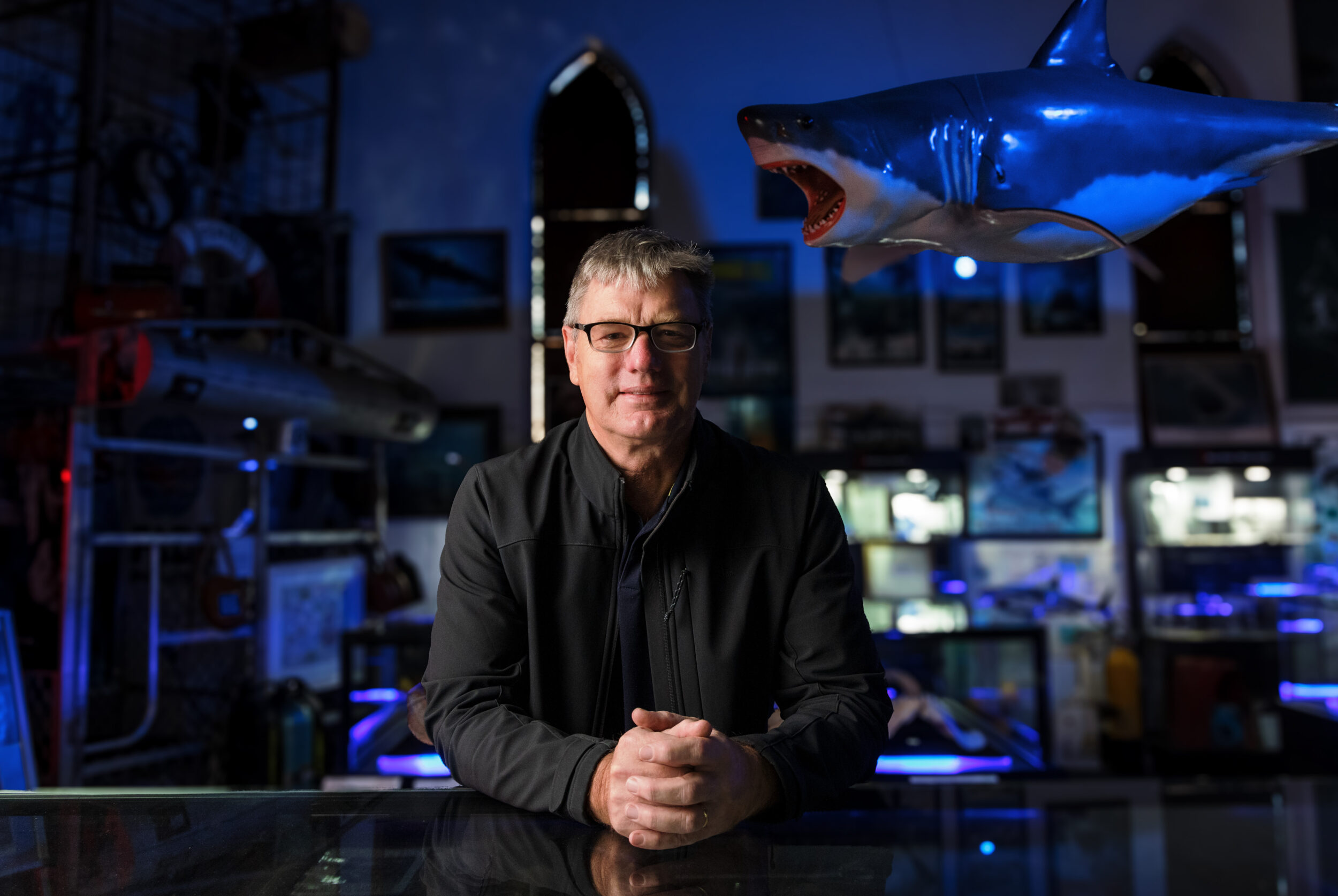Breakthrough research predicting movements of ocean’s apex predators
Posted August 12, 2024

Sharks, satellites and artificial intelligence have come together in a world-first Lot Fourteen led project aimed at predicting the risk of a shark attack.
Lot Fourteen based ESpy Ocean has developed an AI model, in partnership with the University of Adelaide and funded by the NSW Department of Fisheries, that is able to determine with ‘90 per cent accuracy’ the environmental factors influencing a shark’s behaviour.
The ultimate goal is to develop a public warning system, similar to that used for bushfires, based on a low-to-high risk rating of potential for a shark attack based on their predicted behaviour.
The public can then check warnings for their favourite swim or surf spots and decide whether it’s safe to enter the water, or perhaps shelf the surfboard for another day.
“For me the goal is to be able to look at the satellite imagery each day and then use the AI to assess the conditions and identify which beaches are high and low risk of a shark encounter,” says ESpy Ocean CEO Ian Dewey
“We can then say these beaches have the likely conditions to attract sharks and lead to a higher propensity for a shark attack and send out warnings much like with bushfires.
“Resources can then be deployed to monitor the beaches rather than wasting fuel on a plane going up and down the coast in areas where there is no danger.”

From peaceful to predator
ESpy Ocean, founded in 2021 and based in the Stone & Chalk Startup Hub, are remote sensing experts.
Using the power of hyperspectral imagery, the company has developed programs to rapidly detect illegal fishing and transport vessels, detect methane emissions and identify and track schools of prized southern bluefin tuna.
With sharks, ESpy has combined its satellite expertise with AI software to identify/predict weather patterns and water temperatures that could transform a shark’s behaviour from peaceful to apex predator.
To develop the AI model, Dewey and his team analysed a database of the movements of nearly 1000 Great White sharks tagged by NSW Department of fisheries.
They then isolated those sharks where there was a noticeable change in their behaviour and fed the AI satellite data to find a relationship between environmental conditions and the shark’s movements.
Multispectral imagery can identify ocean attributes such as chlorophyll levels, water temperature, currents and water clarity.
“We’ve got to the stage we’re getting a 90% prediction of a shark’s movements – so if the shark goes north, 90% of the time the AI said it would have gone north, if the shark stays where it is, 90% of the time the AI says it will stay where it is,” Dewey says.
“We’re now working to classify this behaviour, effectively tell the AI that in a particular situation, the shark went to another spot, in this situation it started feeding, or in another it joined a group of sharks or it left a group of sharks.
“The one that we’d love to see is when they become aggressive.”
Is it safe to go into the water?
Dewey says predicting movements of Great White sharks based on environmental factors would have “massive ramifications” for the protection of swimmers.
“We know that sharks are present and that the conditions for attack regularly occur, with sharks and humans in close proximity,” he says.
“The missing piece of the puzzle is an understanding of what changes the behaviour of the shark from being benign cohabiter to aggressive predator, and that’s what we’re trying to solve.”
The Australian Shark-Incident Database shows there were 18 shark attacks in 2023, including two fatal attacks in South Australia.
According to Dewey, a shark has two motives for attack: hunger, a human may be the right size and shape to eat. And territorial: a human is in its area and they want it to go away.
“What we do know is the average attack has been from young males attacking in a belligerent way,” Dewey says.
“There’s a number of things that tend to come together but what we know is that generally attacks occur in cool clear water, with the incoming tide which is where all of the shark sensors will work really well, and the shark knows what it’s doing.
“Sharks have really bad eyesight, so clear water is where their eyesight is going to work, as well as their electric and movement sensors that allow them to sense water movement.
“But there’s no definitive consensus as to why a shark will or won’t attack – and that’s the question we’re trying to help answer; what we’ve done has never been done before.”
The next stage for ESpy Ocean is to complete its AI model by June with the aim of having a warning system in place along NSW beaches in time for this summer.
Read more stories like this on Issue_03 of Lot Fourteen’s Boundless Magazine.
Great things come to those who subscribe
Subscribe
"*" indicates required fields
Adelaide 5000
Developed by Frame Creative
Design by The Sideways Theory
Design by Sixth Street Design
Developed by Frame Creative
© Lot Fourteen All Rights Reserved

